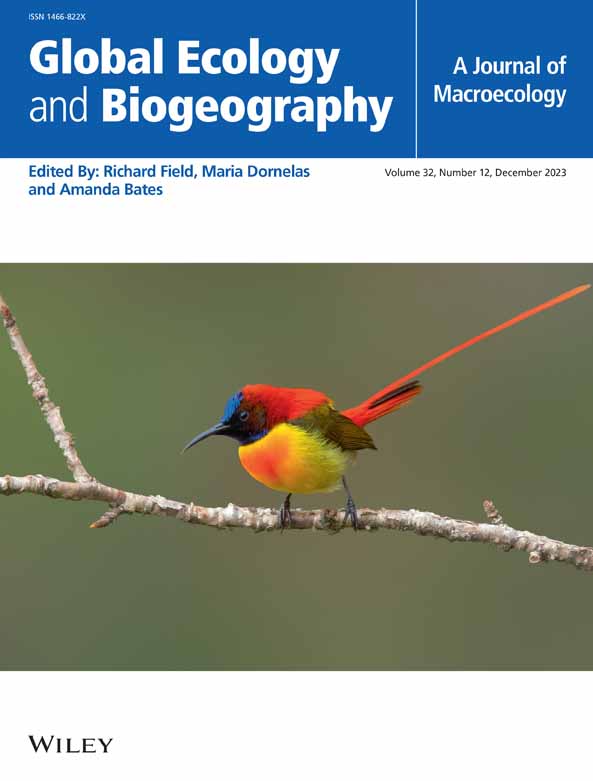Different Macroevolutionary Trajectories Lead to Contrasting Ecogeographical Patterns in Two Widespread Frog Radiations
Abstract
Aim
Large-scale evolutionary radiations often occur through marked climatic gradients, which can promote morphological variation. However, opposite trends to the well-known ecogeographical rules can be observed in closely related clades across different geographic regions. Here, we compared macroscale patterns of morphological diversification between two geographically separated evolutionary radiations of widespread frogs to assess how morphological diversity has arisen and tested whether distinct ecogeographical rules operate at broad spatial scales.
Location
Eurasia and America.
Time Period
~ 50 Mya.
Major Taxa Studied
Rana and Lithobates genera.
Methods
We combined phylogenetic, morphological, climatic, and microhabitat data for 65 species of Rana and Lithobates and used phylogenetic comparative methods to identify which factors have played a major role in the phenotypic diversification of the two radiations.
Results
Morphological evolution in Eurasian subclades closely followed phylogenetic relatedness, with slow and constant rates of body size diversification through time. By contrast, American species showed accelerated rates of body size evolution in one subclade. Adaptive models (OU) best explained the morphological evolution of this radiation despite the lack of significant correlations with climatic variables, suggesting that selective pressures might have driven adaptation. Discordant ecogeographical trends were also found between radiations: Eurasian species followed Bergmann's rule and the water conservation hypothesis, while no clear trend was observed among American species.
Main Conclusions
Overall, different evolutionary trajectories between the two radiations lead to contrasting ecogeographical patterns, highlighting that distinct selective pressures and adaptive mechanisms can play very different roles in the evolution of phylogenetically related clades. Our research demonstrates that ecogeographical rules should not be considered universally applicable but rather context-dependent, and that widespread radiations are valuable systems to uncover mechanisms regulating these general patterns and potential constraints hindering their emergence.


 求助内容:
求助内容: 应助结果提醒方式:
应助结果提醒方式:


